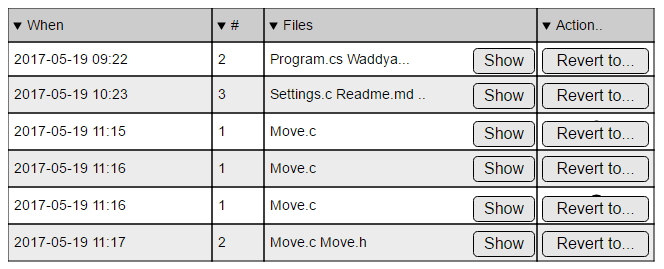A simple remote local logger (with a nicer gui)
I have spent way to much time finding logs and then do-someting, refresh-log-viewer, do-something, refresh-log-viewer, … to repeat in absurdum.
The refresh part is solved with tail or Notepad++’s tail or other options
but it doesn’t work over the wire (or at least I didn’t get it to work).
So I suggest having a simple tail implemented as a simple stand alone web server. Start this “tail” on the machine you have log files. Then you can surf to the web server and with some nifty CSS/javascript have a tail traversing your intranet on a port of choice like so: https://MyServerInTheCellar:666
To avoid polling use SignlR or similar.
If you want it to stay active for days a more stable solution should be crafted.
Highlight latest rows
A nice feature would be to highlight the latest rows. There must be a time limit of sorts to figure out what the “latest” means as the computer (yet) cannot read your mind and know what rows you have looked at and considered.
For simplicity say there is a time limit of 0,5 second where everything inside that interval is considered the same burst of log rows. Color this burst differently to distinguish it from earlier ,and later later, rows.
This should make it much easier to read.
Is it already made?
It seems WebTail does approximately what I am writing about but it polls. It is pleasantly GPL and is written in Java.
I have created bits and pieces of this solution but not anything passed alpha.
I have also noted that Notepad touches the file twice; so if you plan to create this solution don’t use Notepad to figure out how to register and read file changes in Windows.
I found a spike of mine called Farmer Charlie Sprouts at Github. Here is another, even older, project Farmer Logan and his cow called Loui at Github, this time solving the problem of showing the latest updated log rows in an easy-to-read manner.
